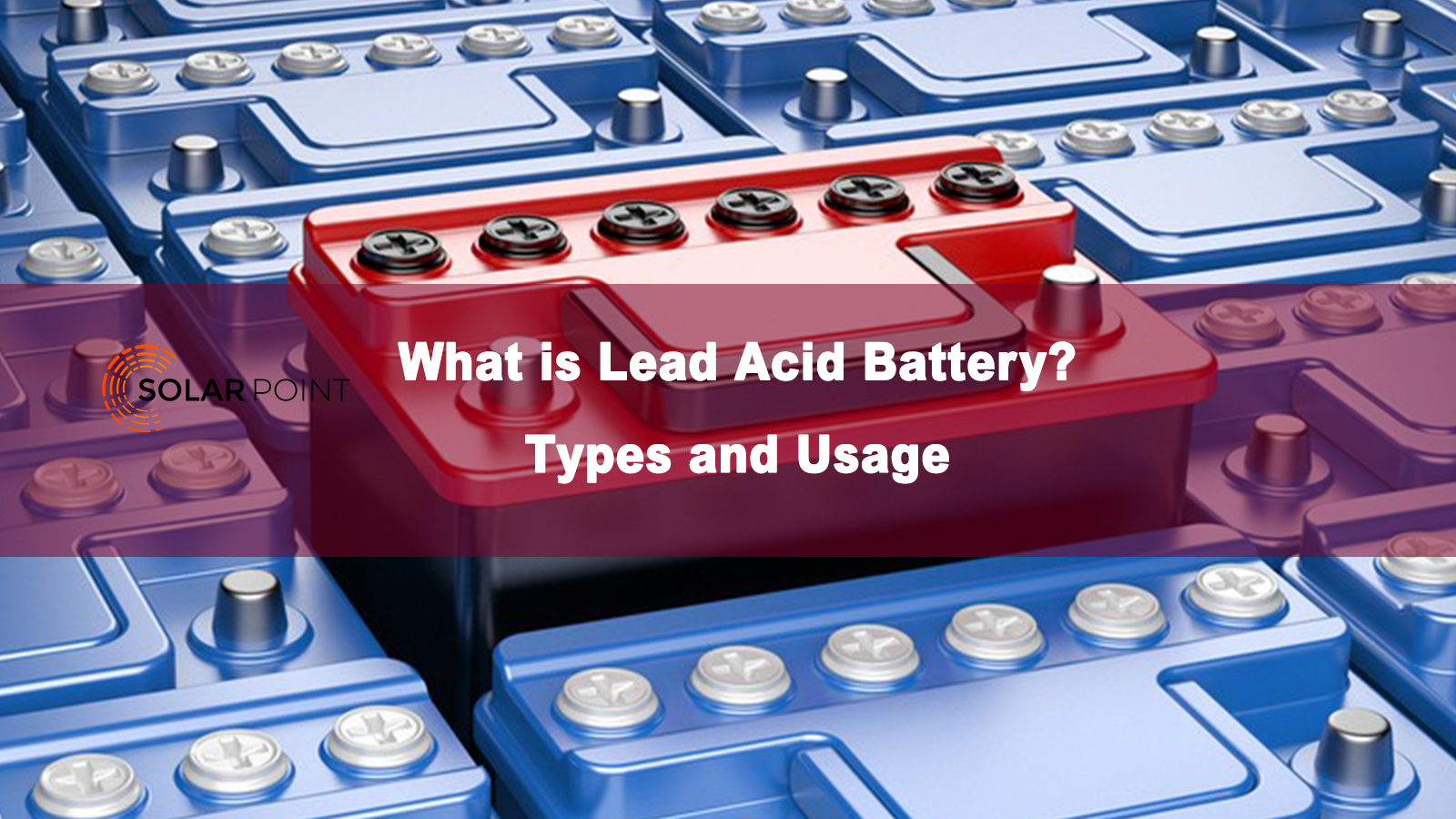What is Lead Acid Battery? Types and Usages

What is a lead acid battery? Types and usages?
A lead acid battery is a rechargeable battery that uses lead and sulfuric acid to function. The lead is immersed in sulfuric acid to allow a controlled chemical reaction.
This chemical reaction is what makes the battery produce electricity. This reaction is then reversed to recharge the battery.
The materials used for lead acid battery are:
Lead peroxide (PbO2): positive plate.
Foam lead (Pb): negative plate.
Dilute sulfuric acid (H2SO4)
How does a lead acid battery work in a simple way?
The lead acid storage battery is formed by dipping the lead peroxide plate and lead sponge plate into dilute sulfuric acid.
Disadvantages of lead acid batteries:
- The amount of usable energy is 30 to 50 percent limited life cycle
- Releasing environmentally harmful acid gas during charging
- Self-discharging meaning they empty themselves, even if they are not in use one percent per day. (This rate increases at high temperatures and decreases at cold temperatures).
- The water gradually decreases and that is why it is important to constantly replenish the batteries with water, to ensure that you get the most out of the batteries.
Advantages of lead acid batteries:
- Inexpensive and easy to manufacture
- Mature, reliable and well-understood technology when used correctly, lead acid is durable and provides reliable service.
- It is susceptible to exposure to high or low temperatures, especially the AGM type, and is suitable for use in cars and machinery.
Types of lead-acid batteries:
There are three types of lead acid batteries manufactured which are VRLAB flooded acid, GEL acid, and AGM glass mat.
1- Flooded Valve Regulated Lead Acid Battery (VRLAB)
They are the oldest types of lead-acid batteries. The problem is that they are susceptible to leakage due to plastic valves, and recently they have been manufactured sealed to prevent leakage. They are the least expensive type and therefore the choice of many renewable energy owners.
2- Gelled Electrolyte Lead Acid Battery (GEL)
It consists of sulfuric acid mixed with silica (silicon dioxide). This substance gives the mixture a gelatinous or paste shape. It is sealed using special pressure valves and must never be opened.
They have been introduced and widely adopted due to their increased efficiency and safety features designed into them.
GEL batteries provide maintenance-free, deep cycle performance so are suitable for UPS, solar, wind, telecommunications, navigation, remote monitoring and marine vehicles.
3- (AGM or VRSLAB) Battery
It is an acronym for "Advanced Glass Mat Valve Regulated Sealed Lead Acid Battery Construction".
It is the latest and most advanced liquid battery technology. Its internal structure is a very fine glass mat in which the acid is fixed.
It provides much higher energy and efficiency than other types of batteries because it has a very low electrical resistance.
It's Developed to provide increased safety, efficiency and durability.
AGM batteries are often used in automobiles and mechanisms with high electrical demand, acid spill resistance, and vibration resistance.
Important note about lead purity:
Quite simply, recycled lead in batteries is not chemically capable of absorbing a charge.
Pure lead can be up to 20% more effective at holding the charge chemically.
Choose the best of these products through our online store or by visiting one of our branches in Damascus
Written By: Solar Point Energy Co. Team
 English
English
 العربية
العربية
